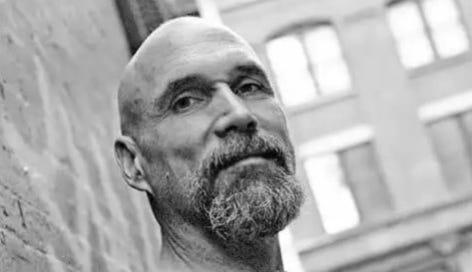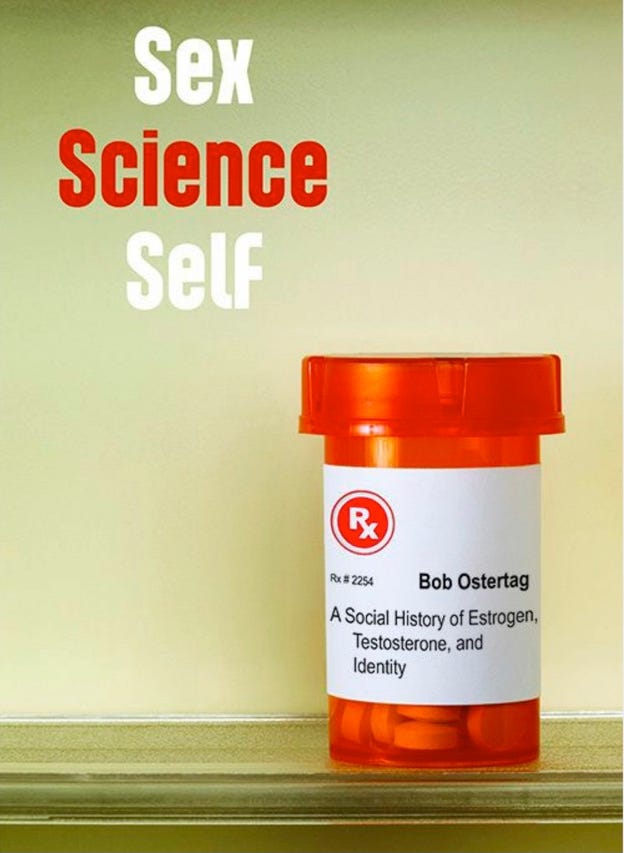Hirschfeld: The Dodgy High Priest of Quackery
A brilliant book reveals the work of Magnus Hirschfeld was appallingly bad. His clinic, the biggest historical icon of the LGBTQ+ movement, was built on fraud and pharma profiteering.
Another day. Another spat.
Last week saw friends and opponents argue yet again on twitter about a clinic in Berlin. In the 1920s. No, it wasn’t the first round in a niche episode of Mastermind. The Institute for Sexual Research was set up in 1919 by a Jewish gay clinician, Magnus Hirschfeld, who fought for decriminalisation of homosexuality. So far so good you’re thinking. No wonder it’s been celebrated as the birthplace of the first tentative attempts to create a gay rights movement.
Not so fast my friend.
As I’ve written here before …there is a catch. In fact there is a clutch of catches.
When I began researching Hirschfeld and his clinic for that previous post I asssumed the claims made for both were a tad exaggerated but I hadn’t dared to suspect they were an almost complete misrepresentation of the facts.
I soon discovered Hirschfeld was a quack who became obsessed by the idea that there was a simple understandable cause of homosexuality. It wasn’t in the upbringing, the genetics or the mind. It was in the gonads. Homosexual men’s testicles were faulty and weren’t producing enough testosterone.
That’s why he referred gay men to Eugen Steinach, who claimed to be able to cure homosexuality by the ‘quick fix’ of giving a surgical dose of heterosexual testicle to a homosexual. Steinach had already made his name by using implants made up of tiny slices of testicle to “rejuvenate” men, giving a boost to their libido and reversing the signs of ageing. Freud tried it. Einstein too. It was complete bollocks, so to speak.
Partly under the influence of Hirschfeld, Steinach developed an operation where homosexual men had their testicles removed altogether and a testicle from a straight man inserted into the patient’s abdomen. Don’t ask me to make sense of this. I didn’t invent it
Some men, desperate to believe it had worked, proclaimed that it had. Here’s a more typical account:-
“After my wife gave her consent, I underwent a bilateral castration. The operation was performed by a well-known surgeon, with the understanding that it would be followed later by the implantation of a testicle from a heterosexual man. As I was already over forty, the initial operation didn't have any dramatic effects. My voice and facial hair weren't affected. My sex drive declined in strength but didn't change its direction. I did lose my body hair, though. A year later the testicle of a heterosexual man was implanted in my abdominal cavity. My body hair began to regrow, but six months later it disappeared again. My sex drive gradually declined until it finally disappeared, but it never changed its direction.”
This sort of medicalised approach to homosexuality…using hormones and surgery to try to change someone’s identity has such eerie similarities with gender resassignment that you may not be surprised to learn that Hirschfeld wrote the script for “trans health care” too, even organising the first sex change op. You can learn more about ‘Dora’ Richter and his surgeon who would go on to become a big noise in the Nazi medical world in my post. It’s a riveting read, even if say so myself.
And talking of good reads ….so is this.
Sex, Science, Self explores the impact of the discovery of hormones in the late 19th Century and the creation of synthetic versions of the sex hormones in the early 20th. The story of homosexuality and hormones quickly became entwined.
I knew nothing about the book’s author, Bob Ostertag, until Stella O’Malley and Sasha Ayad interviewed him on their wonderful podcast, Gender: A Wider Lens. My good friend Bev Jackson then sprung into action, the way she so often does, and set up a zoom call.
A good looking older American guy with a gentle self-deprecating humour, Bob has more strings to his bow than a many-stringed bow-thing. He’s a musician, writer and gay rights activist who lets his curiosity lead him to interesting subjects which he then investigates the crap out of.
His book was published in 2016 but he’d be the first to admit it was largely overlooked. That’s because it was ahead of its time. Bob spotted the trends we’re all talking about now long before they became headline news: like puberty blockers and the shaky evidence for transition success. His tale traces the rollercoaster forward march of the science of hormones or endocrinology as its known to its friends… and bankers. That march ends with the general acceptance of so-called “trans health care”, a billion dollar industry and growing.
By the way, what’s refreshing about Bob is just how resolutely left wing he is. The man went undercover in El Salvador to support the revolution and helped unionise migrant workers on the West Coast. Bob makes Trotsky feel like a slouch.
A whole fascinating section of his book is devoted to Hirschfeld and reveals many things I’d overlooked. For example, Bob (who’s a bit of a big hairy masculine homo) points out Hirschfeld ignored any evidence that suggested homosexuals could be big, hairy masculine men.
Instead, Hirschfeld spent decades trying to stack up his theory that homosexuals couldn’t be “real men” and must have some biological flaw, which is why he leapt so enthusiastically on the bizarro theories of Eugen Steinach.




